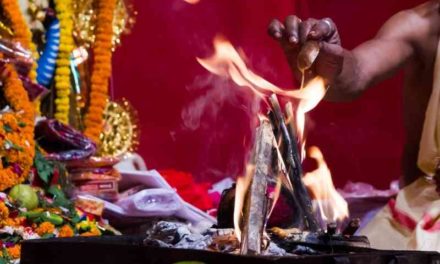Meenakshi Amman temple in Madurai
One of the most beautiful examples of Tamil architecture is the Meenakshi Amman temple in Madurai. This well-known temple is devoted to Meenakshi Devi, a form of Goddess Parvati, and Shri Sundareshwar, a form of Lord Shiva, both of whom are represented by the goddess. Everyone is in awe of the magnificent architectural work that has been done in this temple.
However, the architectural splendor of this Hindu temple is not the only thing that will take your breath away. Many actual miraculous happenings related to this temple distinguish it from all other temples in India, making it much more remarkable than any other.
The Brihadeeswarar Temple
In order to install the 82,000-kilogram apex on top of the 220-foot tower, the engineers constructed a ramp that stretched over 6 kilometers and progressively moved the apex, inch by inch, all the way to the top of the tower. It’s just unthinkable!!
This temple is considered to be one of the most important structures of the Chola period. In addition to the Nandi pavilion, a portico with columns, and a vast hall are among the various buildings that make up the complex.
66 meters is the height of its vimana (a temple-like structure with three cells in which the god is ensconced), which is a temple-like structure with three cells. The inside walls of the temple are adorned with a plethora of paintings and sculptures. The temple’s tower, which is built in the shape of a pyramid and rises to a height of 57 meters, has 13 levels in all.
Its summit is made of a single piece of stone that is 25 feet tall and weighs around 80 tonnes. The Chola monarchs were the first to come up with the structural concept of building a Gopuram (or a beautiful doorway leading into the temple’s enclosing walls).
The Temple is situated in the center of a rectangular enclosure that is approached from the east via a gate that is currently in disrepair. The sanctuary’s double pilastered walls are raised on a molded foundation with lions, which adds to the overall effect. They show Dakshinamurti (in the south), Vishnu (in the west), and Brahma (in the north) in the center niches on both levels (north).
The temple of Nanjundeshwara
Nanjundeshwara Temple, located in Nanjangud, near Mysore, on the banks of the River Kapila, is a well-known Shiva Temple. It is dedicated to Lord Shiva. There is an intriguing truth about this temple that you should know. At one point, the ceiling is open to the sky, and if you look through it, you can see the Bilvapatra tree, which is stretched over the sanctum sanctorum, which is a beautiful sight.
What a remarkable fact that the tree’s roots can’t be seen anywhere in the earth. In addition, the face of Ganesha is radiating from one of the pillars, and people who attend the temple on a regular basis report that the characteristics of the face are improving and that it is becoming more distinct with time.
The Hampi Virupaksha Hindu Temple
Architecturally speaking, the Virupaksha temple in Hampe, Karnataka, is a masterpiece. Aside from that, the temple is noteworthy because it has an inverted version of the main Gopuram, which can be seen inside the temple grounds itself. Despite the fact that this location is not near to the outside walls, but rather in the interiors, the inverted image of the Gopuram may be easily seen here. The science that was used in the creation of this riddle is incredible.
Hasanamba Hindu Temple
This temple, which is situated in Hassan, Karnataka, is well-known for the mystery that surrounds it. The temple, in contrast to other temples, is only open once a year for a period of ten days. After ten days, the pooja is done and the doors are closed, with the doors being reopened only the following year.
There’s a mystery here since the oil lamp that was lit before the doors were closed will still be glowing when the doors are opened. The fact that the flowers brought to Goddess Hasanambe would still be fresh when the doors are opened as if they were just offered, is even more fascinating. This is only one example of the marvels that have occurred in India’s temples throughout the centuries.
Temple of Lepakshi
It is the location where Jatayu died while battling with Ravana in order to spare Seetha from being killed. There is also a sculpture of a bird in this area. This temple is notable for having a floating pillar, which is somewhat unusual in this area. It does not come into contact with the earth.
Once upon a time, a British officer attempted to lift this pillar, but the whole temple began to shake. As a result, if one falls, they all fall. You can effortlessly move a hand key from one side of the room to the other… No one has a clue as to what the enigma is. Not only that but there are hundreds of temples like these around the world. We, of course, have a long and illustrious history.
The stone chain in the Hindu temple located in Kanchipuram
Though the process of creating a stone chain is incredibly time-consuming and costly, it is not impossible. However, it is impossible since the stone chain is made of sandstone and the ceiling stone to which it is fastened is made of granite, which makes the whole thing impossible. Even current science is unable to explain why this is happening.
In Ellora, there is a temple dedicated to Kailasa
This temple is definitely the most magnificent edifice that has ever been constructed on the face of the earth!! This is due to the fact that it is a monolithic construction!!
Yes! All of the temple complex’s structures were built entirely out of a single stone or mountain, and this was done around the 8th century AD! You can only imagine the level of talent and work that went into chiseling the mountain and transforming it into a temple.
Everything about the temple’s structure, from the placement of pillars to the size of the god idols, was designed with a great deal of scientific precision. Our bodies serve as temples. This was something our forefathers believed.
As a result, the temple that was built had the shape of a human body. Arms are represented by the pillars, while the temple’s entrance serves as the temple’s feet, as seen in this illustration. The idol’s head is the location where the ultimate figure of the idol is positioned.
Hindu Temples are sacred for reasons
Temples are sacred places where only the purest of energies and vibrations may be found. Have you ever wondered why we remove our shoes before entering a Hindu temple? If you have, you’re not alone.
Previously, the temple’s flooring had been constructed to be excellent conductors of positive energy, with strong positive vibrations of the magnetic and electric fields in the ground.
Before entering, you are advised to remove your shoes on purpose so that these pure vibrations may penetrate your body and relieve every ounce of tension while simultaneously putting your mind into a meditative state and keeping you away from the distractions of the outside world.
Another reason for taking off your shoes before entering the temples is to prevent all of the dirt and germs, as well as a negative source of energy, from disrupting the flow of positive energy in the temple.
A bell at the entrance to the garbhagriha, which is rung by worshipers before entering the Hindu temple, is something you may have seen. When you hit the bell, it generates a sound by vibrating, which is what you are hearing. In order to engage your sense of hearing.
The bells have been arranged in a way that creates a perfect balance between the left and right sides of the brain. Furthermore, the sound created lasts for a minimum of 7 seconds, resonating all around the room, making it ideal for opening all seven centers of healing in our body at once.
The worshippers’ foreheads are adorned with kumkum/tilak, which is applied by the temple’s priest. The location between the brows is the most important concentration of nerves. This location serves as the primary concentration of energy.
The use of tilak prevents the loss of energy from the human body and acts as an energy absorber, so limiting any further loss. In addition, this influences the blood supply to the facial muscles.





